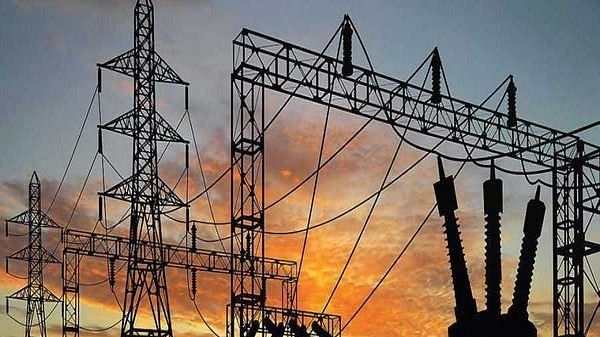Summer is peaking, so is India’s power demand. Last week, it touched 220GW. This was the highest daily peak in our history and signifies the gains the country has made on electrification and economic growth. While most consumption is still from coal-based thermal plants, India is also making strides on renewables. In fact, transition to renewables is a critical component of our climate policy. However, India also runs the risk of financial problems in the traditional electricity sector being a hurdle for further development of renewables, and subsequently our climate transition.
Also read: Why Western charm offensive for Modi is proof of PM walking foreign policy middle path
The revenue gap at discoms
While power consumption is at an all-time high, the same cannot be said of the bottom line of the electricity distribution companies, or discoms. Even though there is wide variation in discom performance across the states, it is useful to look at the all-India numbers that provide an overview of how they are performing. According to a report by the Power Finance Corporation (PFC), aggregate losses for distribution utilities had increased from Rs 30,203 crore in 2019-20 to Rs 50,281 crore in 2020-21.
A discom regularly releases the tariffs it will charge its customers. When a state government announces free or subsidised electricity, the reduced price of electricity is reflected in the tariff charged by the discom. According to the PFC report, the average cost of supply of electricity across India in 2020-21 was Rs 6.19/kWh. The average revenue, assuming the state government releases the funds to the discom for the subsidy in time, was Rs 5.78/kWh. However, the average revenue based on the subsidy actually received was Rs 5.62/kWH. This means that even with the state subsidy, there is a gap of Rs 0.57/kWh between the cost and revenue. In 2020-21, state governments had released only 85 per cent of the tariff subsidy billed.
In addition to the subsidy, discoms suffer from huge AT&C losses — this includes losses in transmission, theft, and collection hurdles in certain areas and from certain customers. The average AT&C losses have been increasing — from 20.73 per cent in 2019-20 to 22.32 per cent in 2020-21.
Also read: Markets are questioning quality of carbon credits, community-based products the new hype
Dealing with the financial challenges
Discoms deal with their poor financial situation in at least two ways. One, they borrow, often raising their interest burden in the long run. Total borrowings of discoms were about Rs 6 lakh crore as on March 31, 2021. Five years ago, this was about Rs 4 lakh crore. The interest cost of discoms was Rs 55,000 crore, the average debt service coverage ratio (DSCR) was 0.15. A DSCR of less than 1 implies that an entity owes more money to creditors than it generates in cash. The current DSCR of discoms raises serious cause for concern. It is not inconceivable that we will soon have to confront ways of dealing with bankruptcy of state-run utilities.
Second, they charge higher prices to their commercial and industrial (C&I) consumers, while subsidising their domestic and agri ones. In 2020-21, about 50 per cent of the revenue of discoms was from C&I consumers. The cross-subsidy may work for a while, but over time, it has begun to incentivise the high paying customers to opt out of the discoms and buy power from elsewhere.
Also read: Vishwaguru vs who in 2024? Oppn has multiple answers if it chooses to look beyond Rahul Gandhi
Transition to renewables
This is where India’s transition to renewables begins to intersect with poor discom performance.
Renewables is essentially led by private sector generation companies (gencos). They are able to provide electricity to C&I customers at cheaper rates. This energy is probably more reliable and cheaper than what C&I customers get from discoms.
This energy is probably more reliable and cheaper than what C&I customers get from discoms.
If C&I customers have ESG mandates, they may prefer buying electricity from the renewable gencos. As per the Electricity Act, discoms are required to grant “open access” when customers (largely C&I) and gencos privately negotiate a deal, and want to use the network for transport of electricity. When the high tariff paying C&I customers leave, discom finances further deteriorate. Discoms, therefore, find ways to not allow open access to keep C&I customers captive.
Gencos also enter into contracts with discoms (usually state-owned and state-managed) to sell power at specified tariffs. Poor discom finances often lead them to delay making payments to the companies from whom they are buying power, or renege on the tariffs they agreed to in the power purchase agreements (PPA) leading to increased litigation, and reduced investments by the private sector in electricity generation.
The Union government has tried to create a centralised market for renewable energy through its one-nation-one-grid policy. As the Inter State Transmission System (ISTS) becomes more embedded, there will be greater freedom for customers to buy and gencos to sell power from anywhere in India. This will further deteriorate discom finances and create friction between traditional thermal-based electricity system and the renewables sector.
Policies that provide free power or highly subsidised power to agriculture and domestic consumers have contributed to getting the discoms to a precarious financial situation. There may also be reasons for the high cost structure of discoms. Their financial situation is not only problematic for the health of the discoms, but also for our transition to renewables.
Renuka Sane is research director at TrustBridge, which works on improving the rule of law for better economic outcomes for India. Views are personal. She tweets @resanering
(Edited by Anurag Chaubey)






